10 Pyruvate Dehydrogenase
typora-copy-images-to: ./images
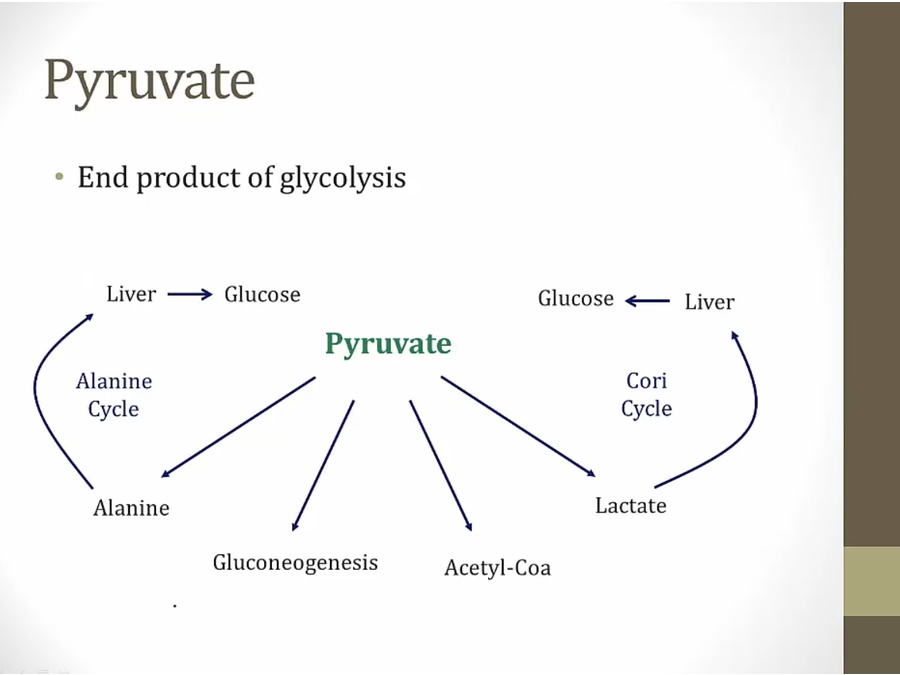
- pyruvate dehydrogenase to acetyl coa to TCA
- lactate: RBC without mitochondria and muscles. Muscles release lactate to blood to go back to liver
- alanine: alanine carry nitrogen to liver, extract nitrogen to urea
- must enter mitochondria for gluconeogenesis and acetyl coa

- 1st step for gluconeogenesis in mito
- outer: just a pore
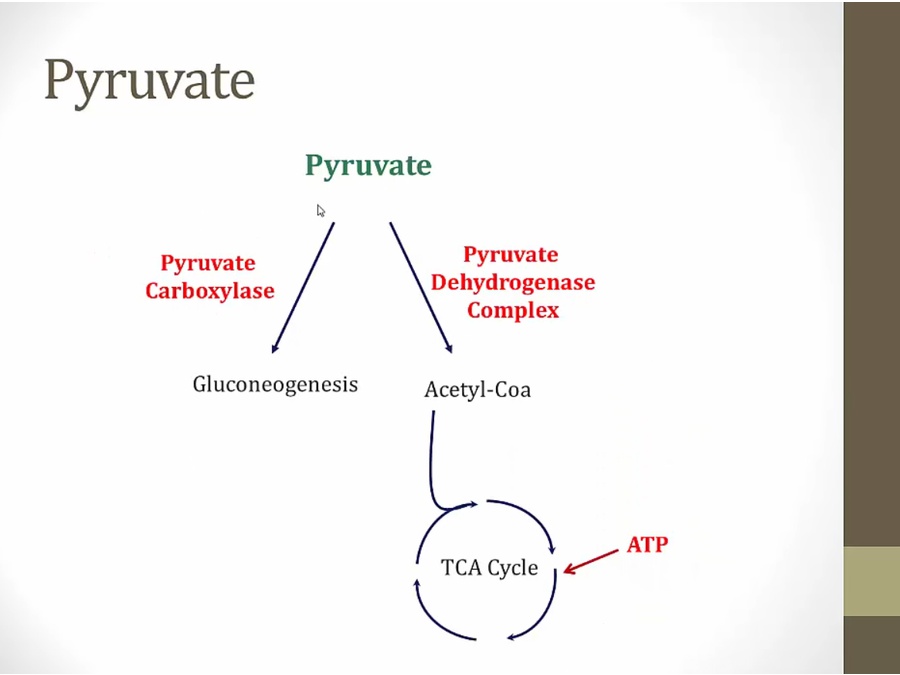
- once inside mito
- high ATP, slow TCA, high Acetyl- coa and activates pyruvate carboxylase, preferential shunt towards gluconeogenesis
- acetyl coa also inactivates pyruvate dehydrogenase
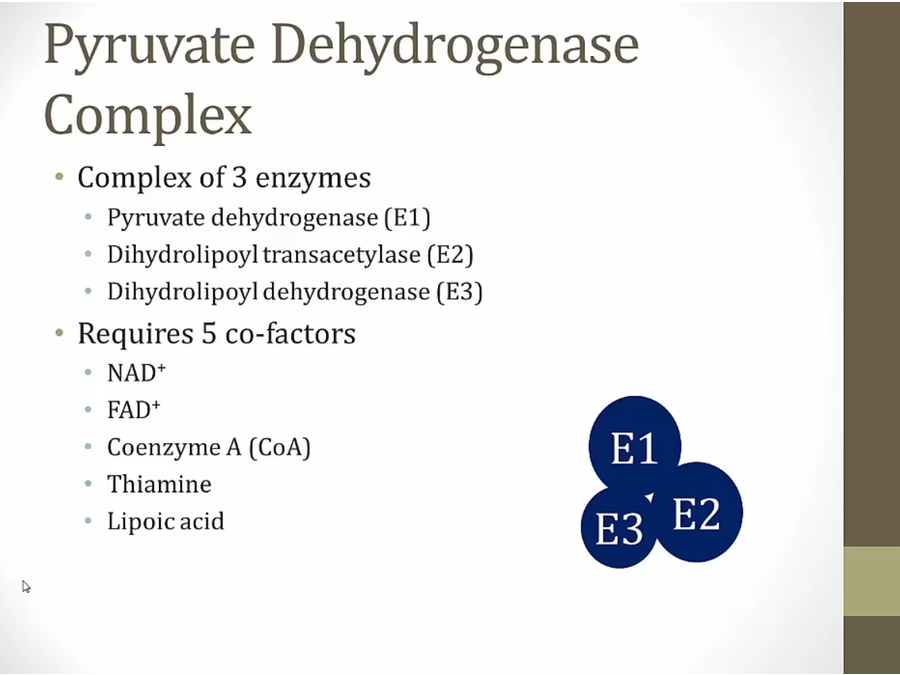
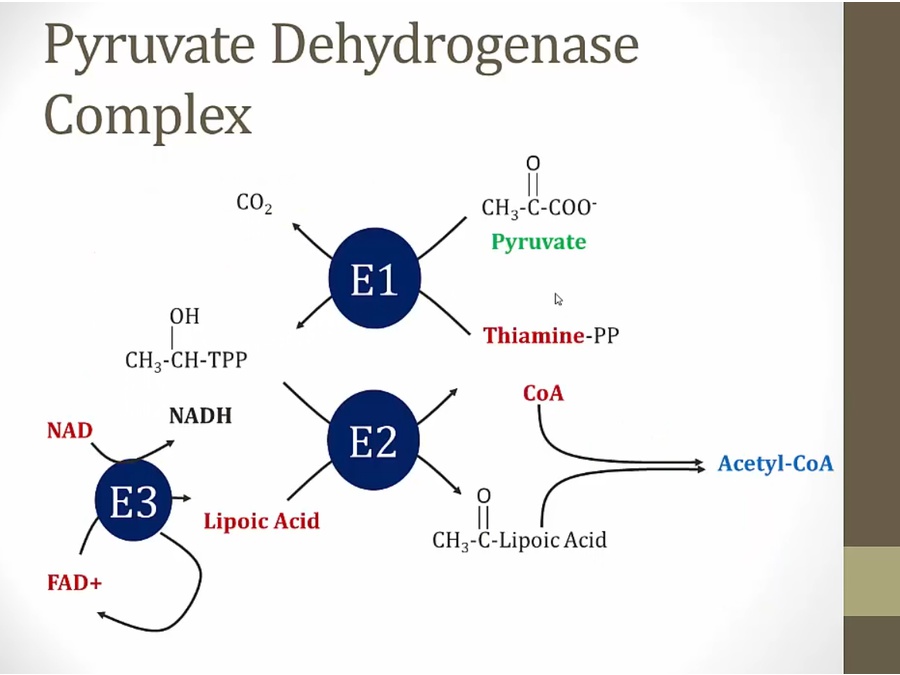
- E1 adds thiamine PP to pyruvate and release CO2
- E3 keeps lipoic acid in proper form
Thiamine

- TPP active form, 2 phosphates from ATP
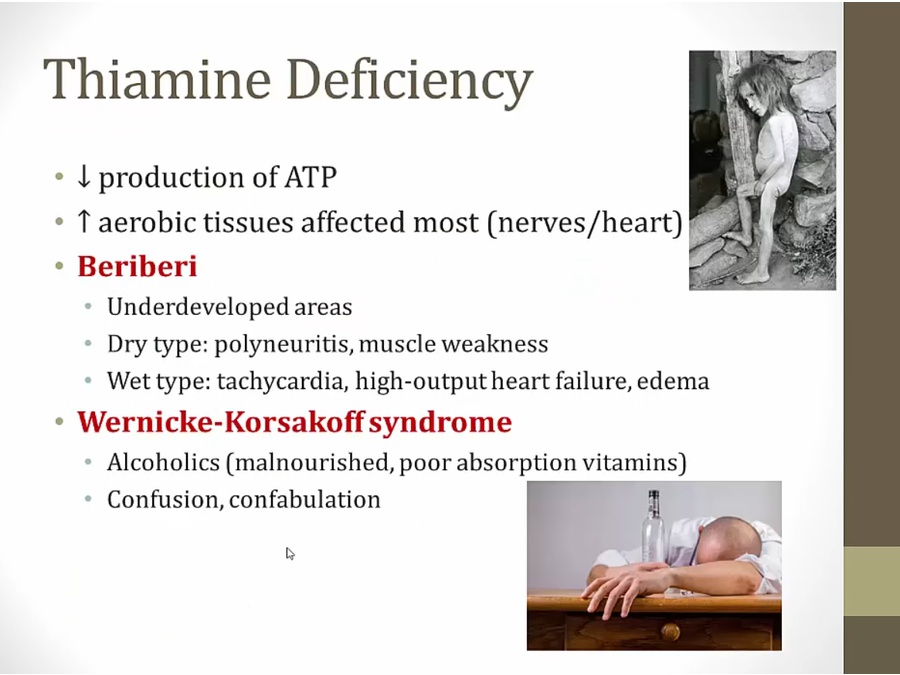
- thiamine deficient, cannot convert pyruvate to acetyl-coa, no ATP
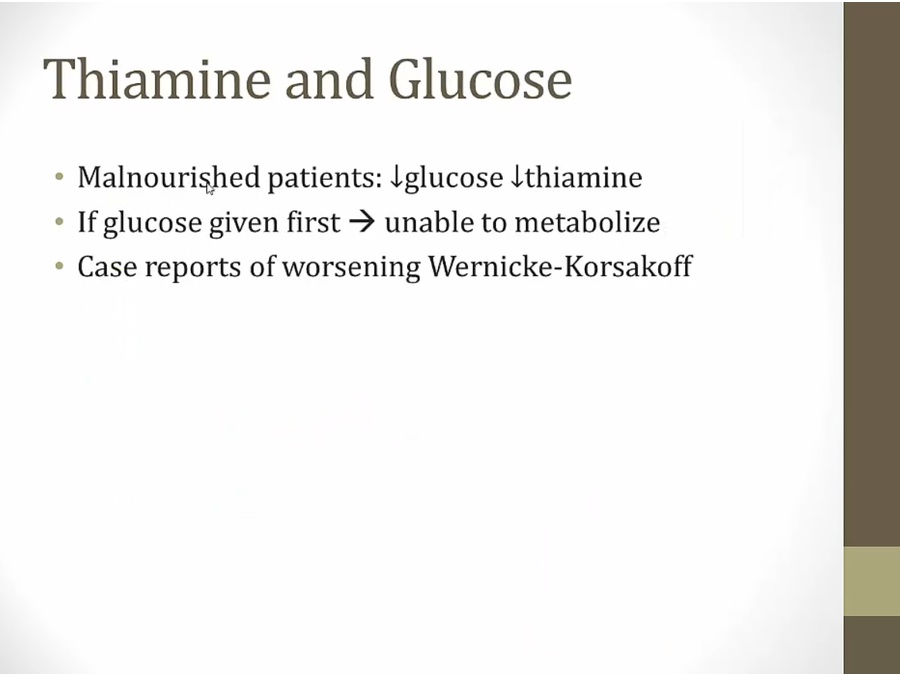
FAD
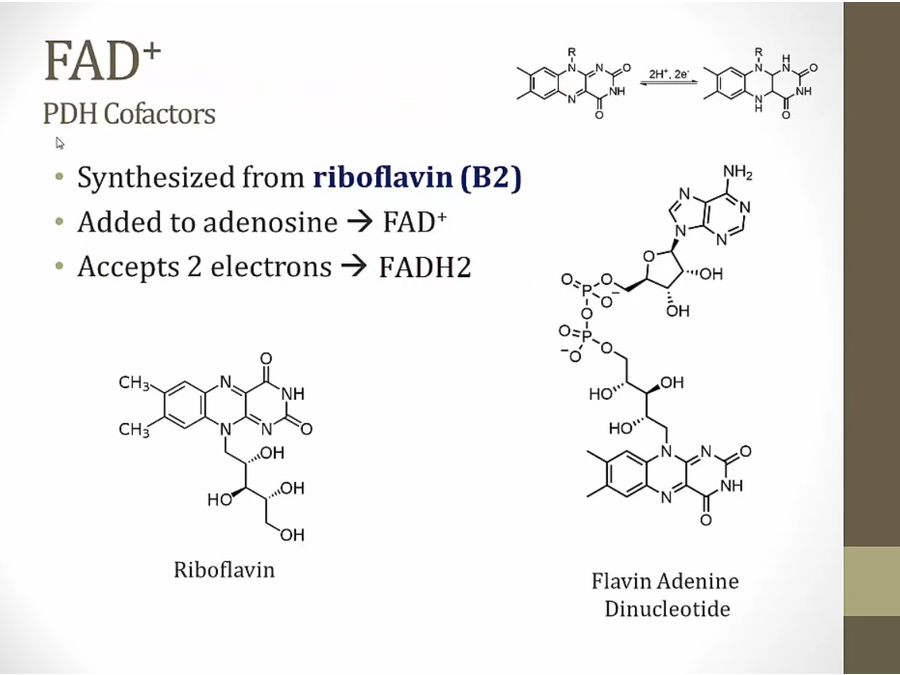
- used in oxidative phosphorylation
NAD
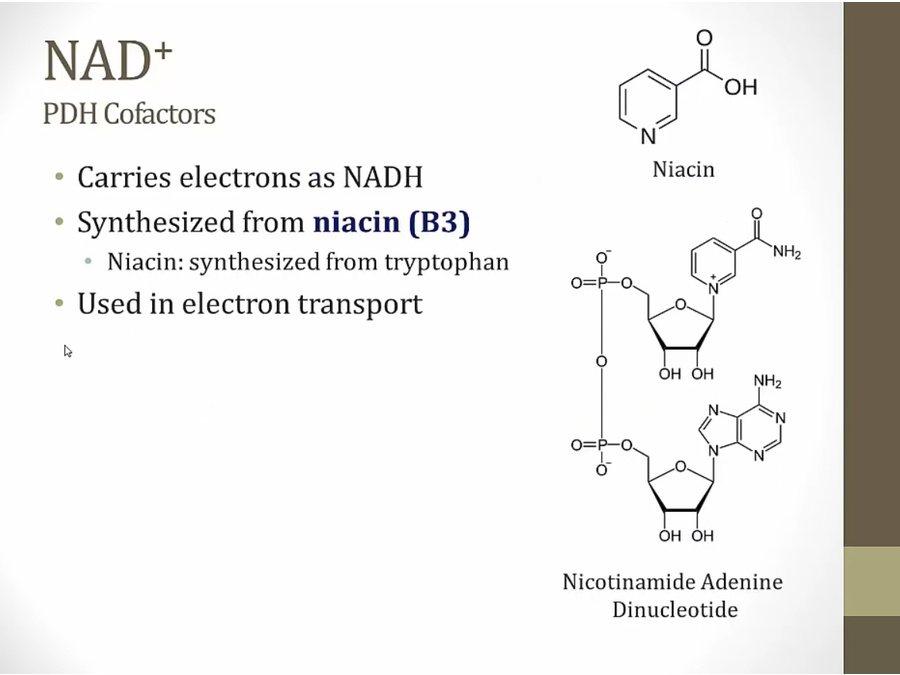
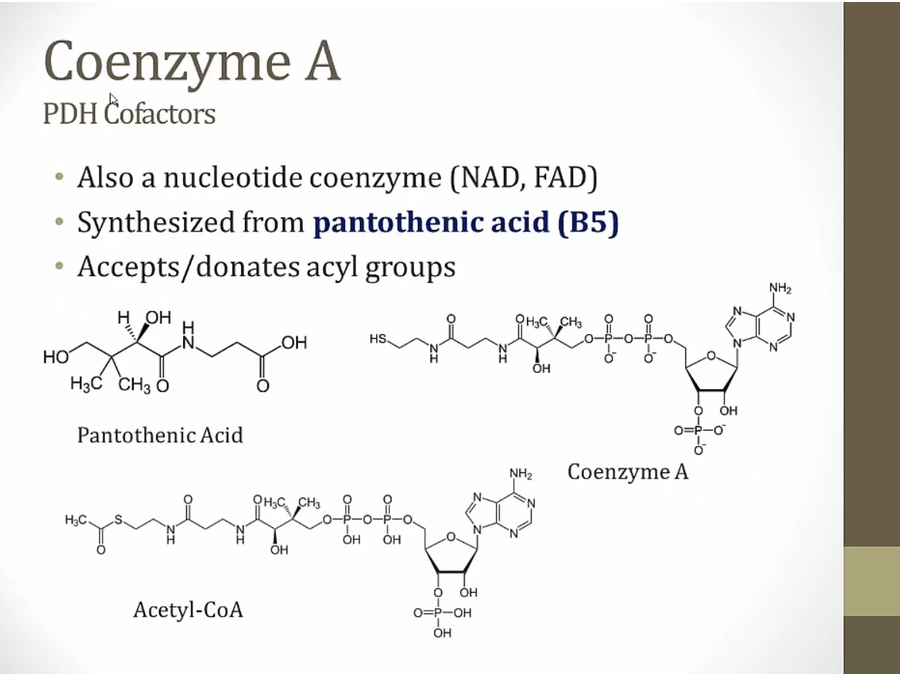
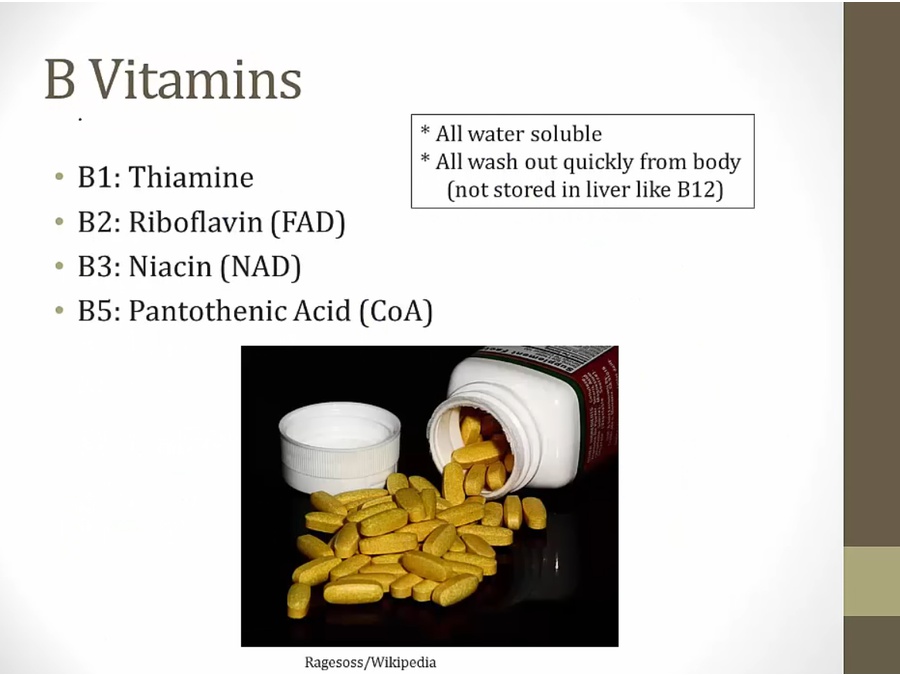
- first 4 all used in pyruvate dehydrogenase complexes
Lipoic
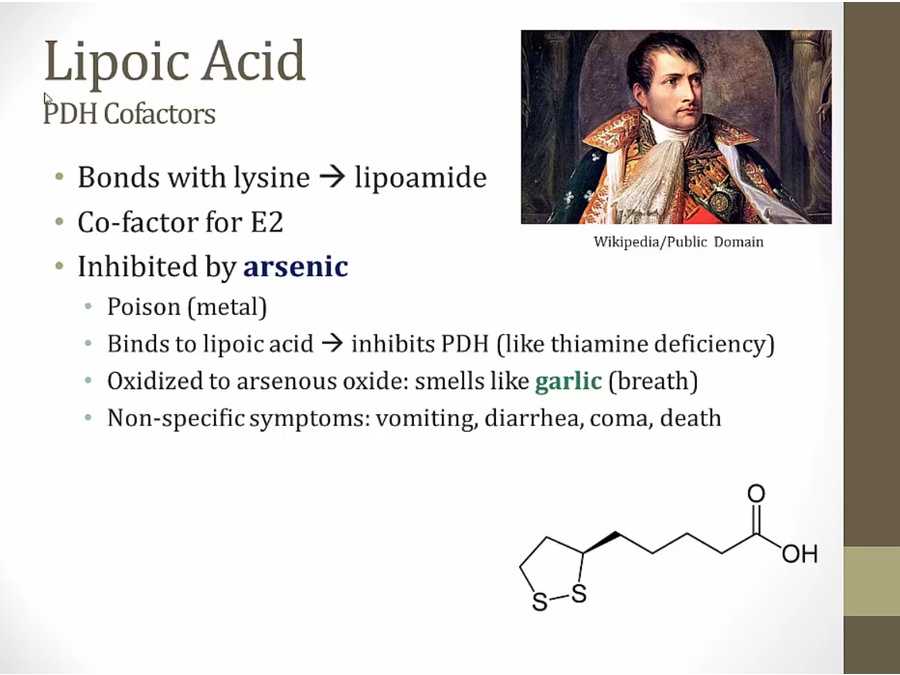
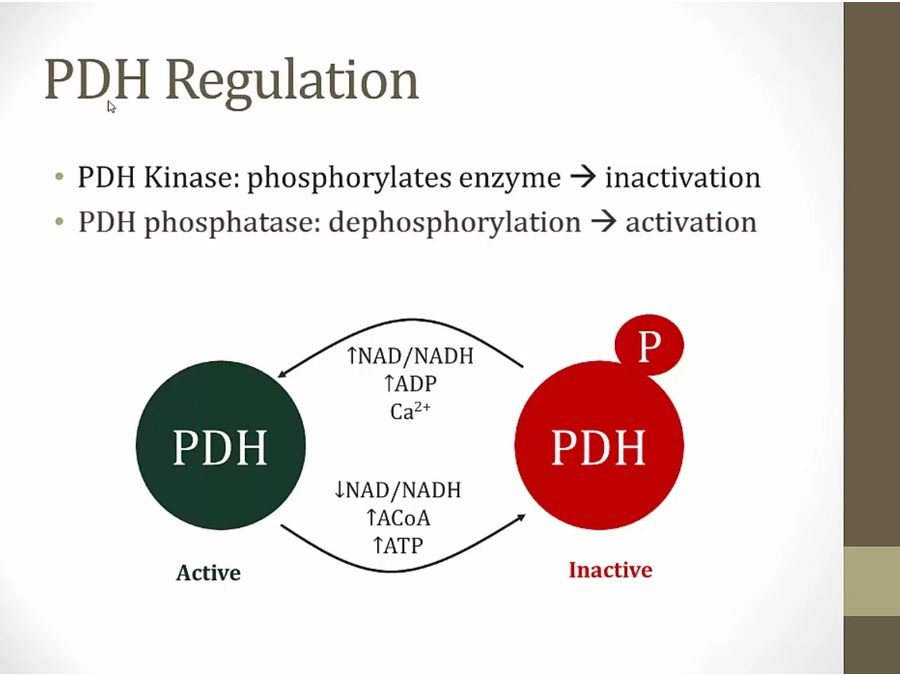
- Ca activator in skeletal muscles when exercising
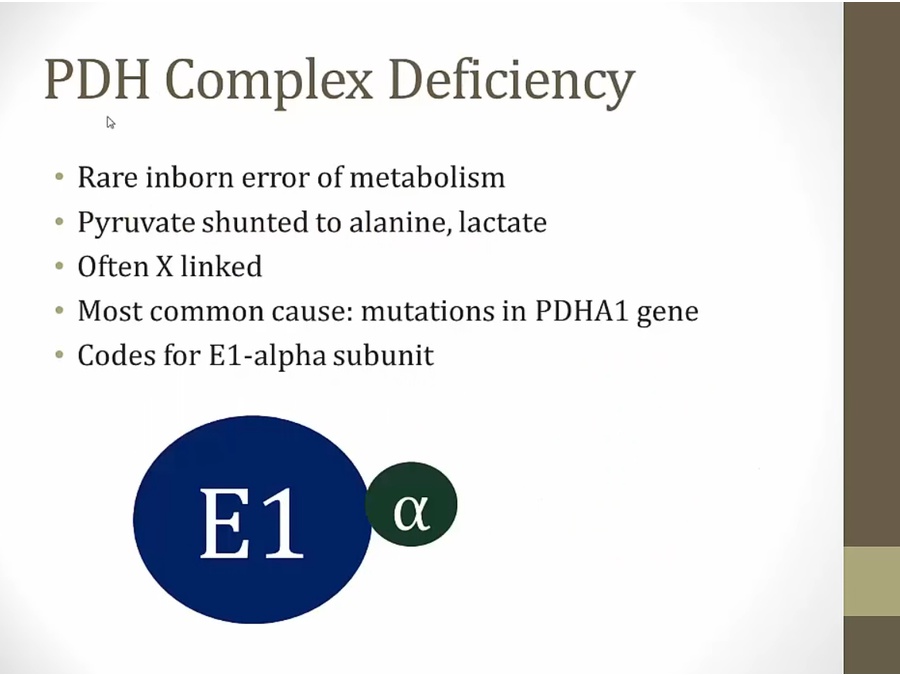
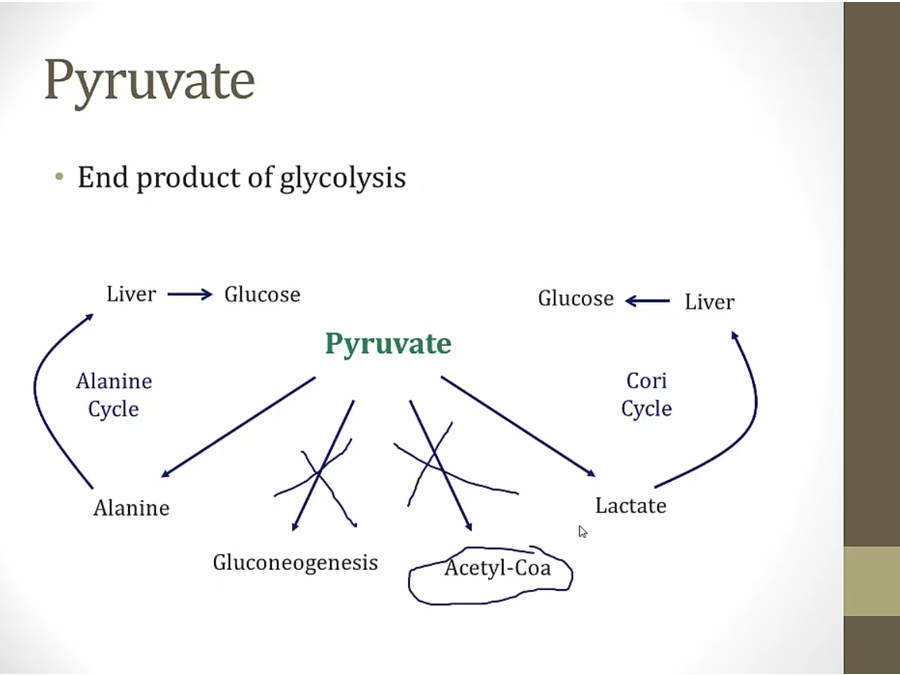

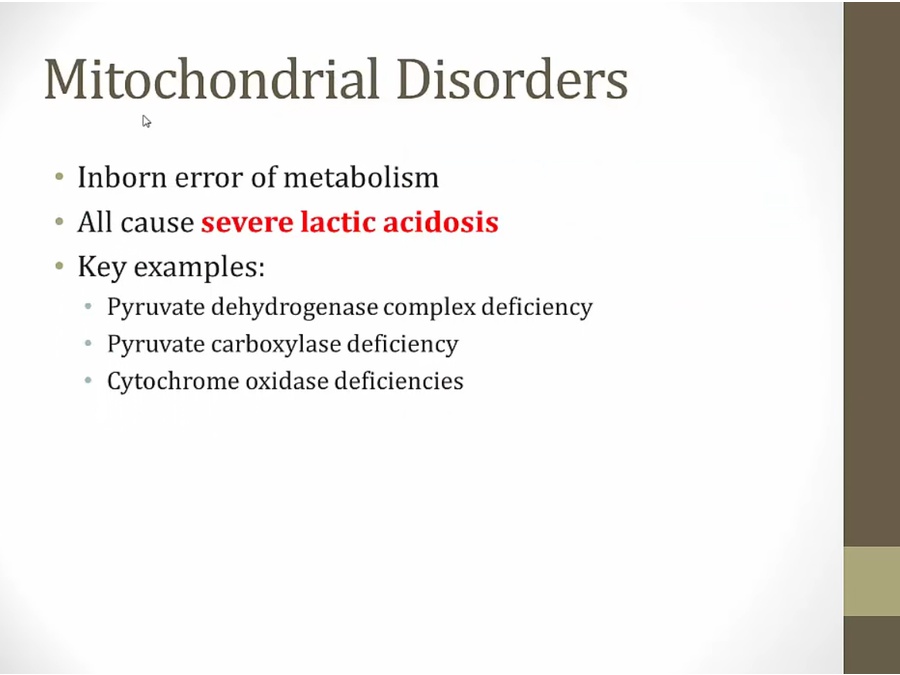
- whenever pyruvate not metabolized, build up in mito and shunted towards lactate

- fat converted to acetyl coa without going through pyruvate
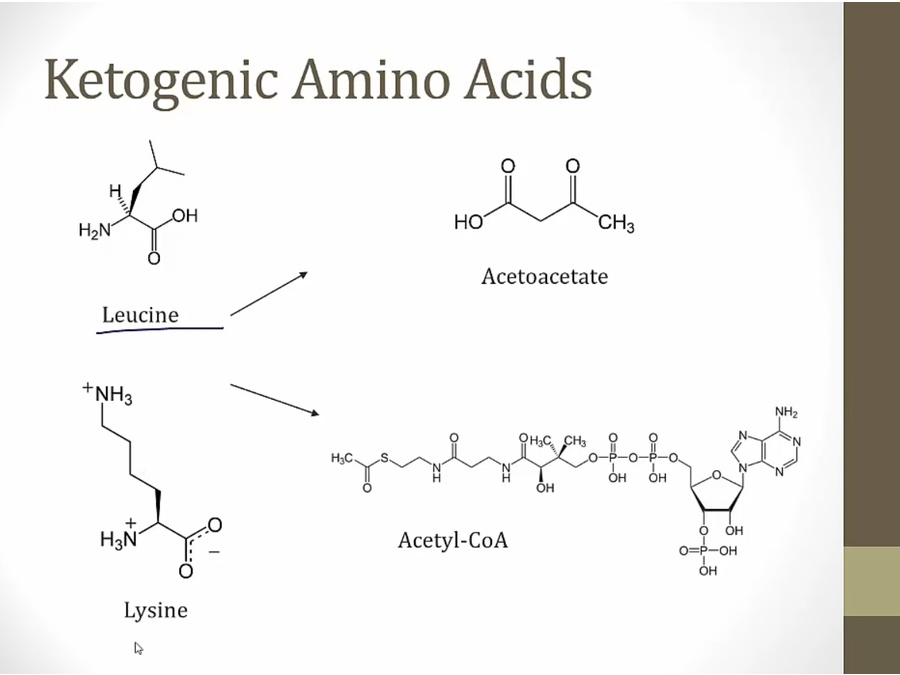
Backlinks



















